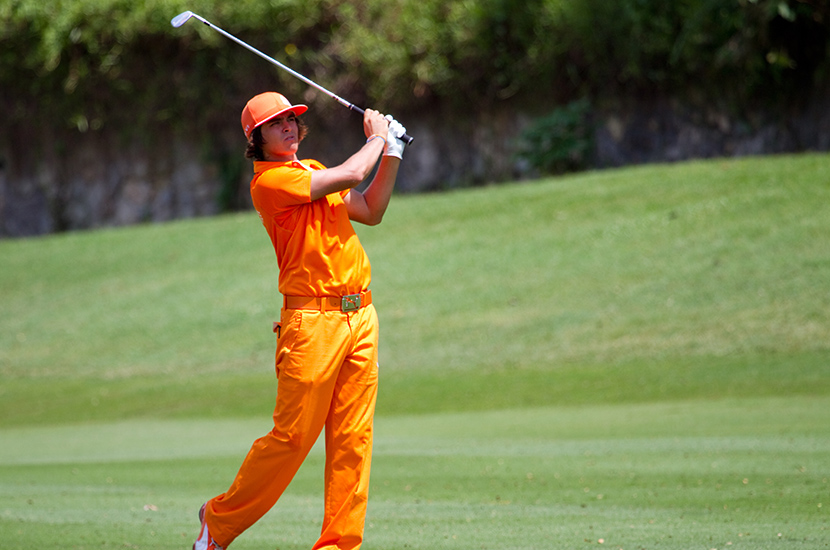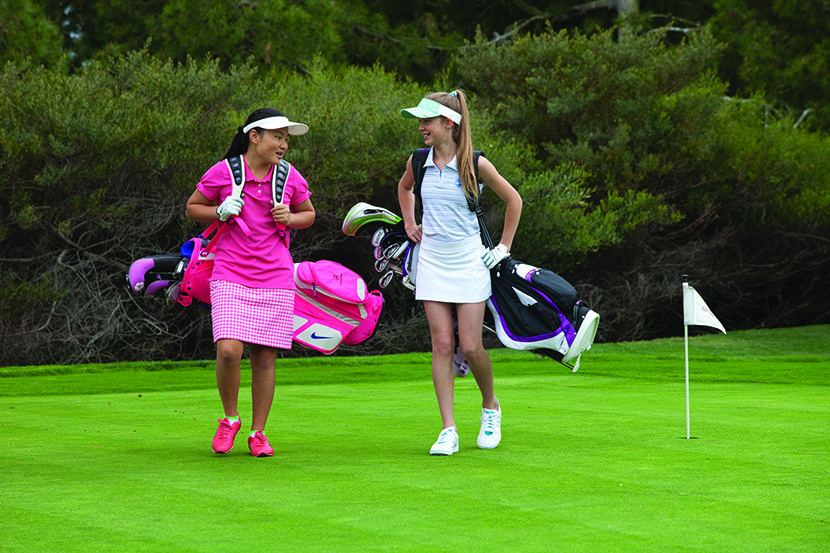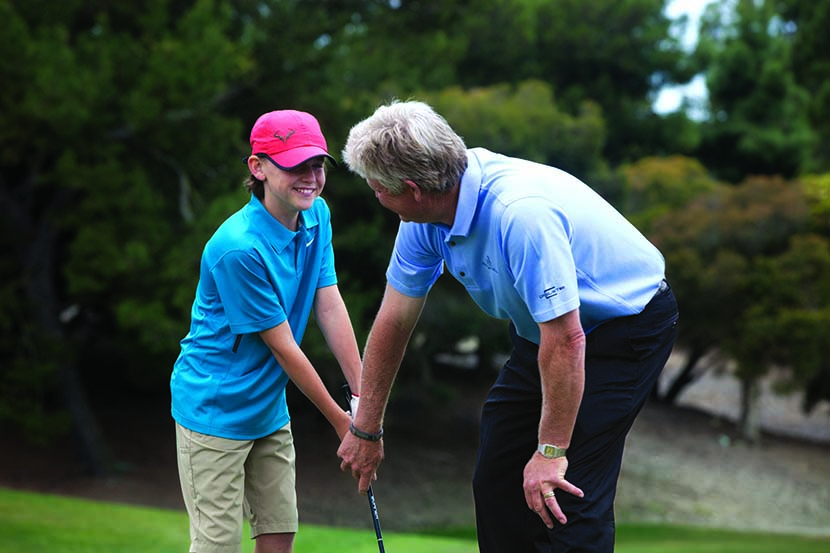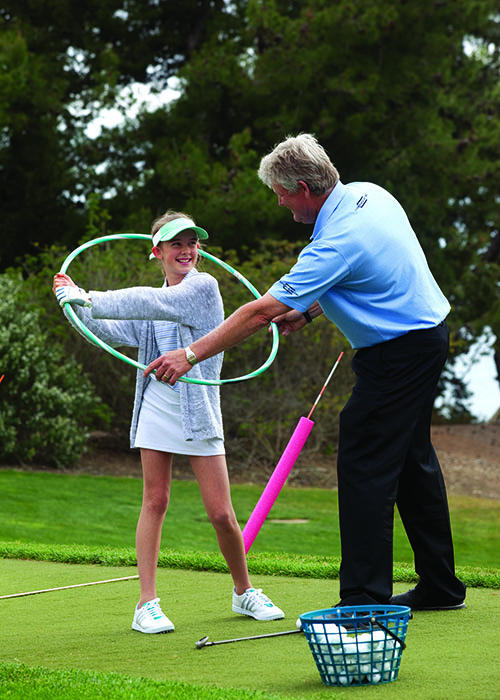By Dale Leatherman

It’s been more than a century since golf had a place in the 1904 Summer Olympic Games in St. Louis. The sport was on an Olympic hiatus until the 2009 meeting of the International Olympic Committee (IOC), where a contingent of golfers including Michelle Wie of the U.S. and then-16-year-old British Amateur Champion Matteo Manassero of Italy convinced the IOC to reinstate golf for the 2016 and 2020 Summer Games.
This summer in Rio de Janeiro, the world’s top men and women golfers will play for individual Olympic medals on the Reserva de Marapendi, a course built especially for the XXXI Olympiad. Sixty players of each gender will participate in 72 holes of stroke play, based on their standing in the International Golf Federation’s (IGF) world rankings as of July 11, 2016. The 15 top-ranked players of each gender will qualify, with a limit of four per country. Nations that do not have two people in the IGF’s top 15 will be represented by their two highest ranked players.
As the Olympic qualification deadline nears, all eyes are on the rankings of the hottest young players: LPGA Tour stars such as New Zealand’s Lydia Ko, Korea’s Inbee Park and the United States’ Stacy Lewis and Lexi Thompson; and PGA Tour players such as Australia’s Jason Day, Ireland’s Rory McIlroy and U.S. standouts Jordan Spieth and Rickie Fowler. It is this next generation that fuels the game’s comeback—a new perception of an ancient sport.
Young Guns of Golf
When I asked one of the teenagers at my golf club why she plays golf, she gave me the ubiquitous eye roll. “It’s fun,” she said, turning back to her putting practice and dismissing me as a clueless adult.
I suppose I was looking for something deeper, perhaps a reference to the game’s colorful history, its mental and physical challenges, the camaraderie or even the beautiful natural venues. But, clueless or not, I can recognize “out of the mouths of babes” wisdom. If it weren’t fun, no one would ever have persisted in trying to hit rocks into holes with a stick.
Six centuries have seen dramatic changes in golf, but the most exciting may be its new perception by young people. Children are discovering that it is indeed fun and challenging—no longer just a game for “old guys in funny pants.” And no one who has ever swung a club can truthfully say it’s not a “real sport” or that golfers aren’t athletes. Golf can probably thank the fit, demonstrative Tiger Woods for sparking this change of attitude, and today’s young guns like the aforementioned Ko, Park, Lewis and others for carrying the torch.

Because of new role models on the LPGA and PGA tours and industry initiatives to grow the game, participation in PGA Junior League golf almost doubled from 2014 to 2015, according to professional golfer and PGA secretary Suzy Whaley, who coaches young players at the Suzy Whaley Junior Golf Academy in Connecticut. “More than 30,000 youngsters played on 2,500 teams throughout the country last year,” she says, and 2016 looks like another bumper year.
Trickle-down interest from longtime players to their offspring is a traditional way for golf to attract new players, but there’s also a reverse effect at work these days. Parents and grandparents are returning to golf or taking it up for the first time because of their children and grandchildren’s participation in programs like PGA Junior League.
“PGA Junior League is like Little League for golf, with uniformed teams competing against each other,” says Steve Friedlander, vice president of golf operations at Pelican Hill Golf Club. “We now have parents and grandparents taking up the sport because they can play with their kids and grandkids. You can’t play baseball, football or basketball with your kids, but you can play golf with them.”
The Orange County area is emerging as a hotbed of new golf talent with players like Alyaa Abdulghany, a junior at Corona del Mar High School who ranked eighth in Golfweek’s national junior girls’ rankings and 12th in American Junior Golf Association (AJGA) standings.
“I started playing when I was 7,” says Abdulghany, who became curious about the game when her parents drove past a driving range. “Golf has allowed me to grow as a person and make amazing friendships. It has opened up so many opportunities and benefited me in ways that never occurred to me. Golf is my serendipity.”

Glenn Deck, director of instruction at Pelican Hill and its sister course, Oak Creek Golf Club, attributes the growth of junior golf in the area to a wealth of knowledgeable teaching pros and quality role models on the PGA and LPGA tours. “Successful young players on the tour make the sport more intriguing to young amateurs,” he explains. “Fowler and Spieth have brought a lot of energy and emotion to the game, and what Ko has done on the LPGA Tour is phenomenal.”
In 2015, at 17 years and nine months old, Ko became the youngest player of either sex to be ranked No. 1, and the youngest woman to win a major. She posted the lowest final round in women’s golf history with a 63.
But Deck adds that keeping young players engaged is a challenge. “There’s a lot of competition for their time, and most do not want to simply hit balls for an hour,” he says. “We have to mix it up with different games, exercises and drills to keep it interesting and fun.”
Age-Old Advancements
Innovative technology in myriad aspects of the sport is also helping to grow the game. “When I was a kid, everyone played with the same kind of clubs—steel shafts, leather-wrapped handles and balata balls that were not always completely round,” says Friedlander, who came to Pelican Hill from the Kohler Co. in Wisconsin, where he managed all aspects of golf on the legendary Whistling Straits and Blackwolf Run courses as well as The Duke’s in St. Andrews, Scotland. “When game improvement clubs made it easier to get the ball in the air and control miss-hits, the game changed. Then balls appeared with three-piece cores and hard Surlyn covers, and the game changed even more. Of all the innovations in players’ equipment, I think the evolution of the golf ball is the most significant.”
A golf professional for more than 40 years, he also adds that other advancements are making an impact as well—especially course maintenance. “Turf varieties continue to evolve, hybrids allow us to do things differently and the machinery is more accurate,” Friedlander says. “Forty years ago, we cut greens at one-sixteenth of an inch; today we cut them under one-eighth of an inch. When it’s a green with lots of undulations, it makes putting much more difficult. Course designer Pete Dye has told me many times that if he had known some of his courses would end up with this kind of speed, he would have designed them with less movement on the greens. Today on some courses, you barely touch the ball and it goes 10 feet.”
Rick Howard, general manager of Strawberry Farms Golf Course in Irvine, agrees. “In my golfing life, advances in turf and maintenance equipment have added to lower scores almost as much as improvements in golf clubs and balls,” he says. “The fairways and tees on many modern designs are in better condition than some of the greens I played on as a youth.”

These developments, combined with shifting attitudes, are helping the game on a much broader scale and loosening some of the strict rules associated with golf. “The PGA of America is doing everything it can to grow the game,”’ Friedlander says. “And the smart golf clubs—the ones that are thriving—have rethought their philosophies and are making golf more accessible. Here at Pelican Hill, if golfers arrive in jeans and T-shirts, we let them play. … The vast majority of golf is played on public courses, and private clubs have to soften dress codes and allow outside play on days it’s not busy or continue to lose rounds.”
“Golf professionals are the ambassadors of the game,” Howard adds. “If they try harder to make the game fun, it will help bring the sport out of the doldrums. We need to find ways within the rules to make recreational golf play faster, and to teach etiquette without intimidation. If players learn to respect the course, they’ll fix divots and ball marks and rake bunkers, increasing the enjoyment for everyone.” NBM




